Draining pilonidal cyst at home. Pilonidal Cysts: Home Remedies, Treatment, and Prevention Guide
What are the most effective home remedies for pilonidal cysts. How can you prevent pilonidal cysts from recurring. When should you seek medical attention for a pilonidal cyst. What are the surgical options for treating pilonidal cysts.
Understanding Pilonidal Cysts: Causes and Risk Factors
Pilonidal cysts are sac-like structures filled with hair, skin, and debris that typically form at the top of the buttocks, right between the cleft. These cysts develop when hair becomes lodged inside the skin, often due to friction from sitting or rubbing. The irritation caused by this ingrown hair can lead to cyst formation.
Who is most at risk for developing pilonidal cysts?
- Men
- People who sit for long periods (e.g., office workers, truck drivers)
- Individuals with thick, stiff body hair
In some cases, pilonidal cysts can become infected, resulting in the formation of an abscess – a pocket of pus that can cause significant discomfort and require medical intervention.

Home Remedies for Managing Pilonidal Cyst Discomfort
While surgical intervention is ultimately necessary to remove a pilonidal cyst, there are several home remedies that can help alleviate pain and discomfort in the meantime:
- Apply a hot, wet compress to the cyst several times a day to help draw out pus and promote drainage.
- Soak the affected area in a warm, shallow bath or take a sitz bath.
- Use over-the-counter nonsteroidal anti-inflammatory drugs (NSAIDs) like ibuprofen to manage pain.
Can you pop a pilonidal cyst at home? It’s strongly advised against attempting to pop or squeeze a pilonidal cyst yourself. This action can lead to infection, scarring, and incomplete removal of the cyst contents, potentially exacerbating the problem.
Medical Treatment Options for Pilonidal Cysts
When home remedies are insufficient, medical intervention becomes necessary. The primary treatment for pilonidal cysts involves a simple in-office procedure:
- The area is numbed with a local anesthetic injection.
- A small incision is made to drain pus and debris from the cyst.
- The wound is either packed with sterile gauze or closed with stitches, depending on its location.
How long does recovery take after pilonidal cyst drainage? Recovery time varies, but most patients can return to normal activities within a few days to a week. It’s crucial to follow your doctor’s wound care instructions carefully to ensure proper healing and minimize the risk of recurrence.
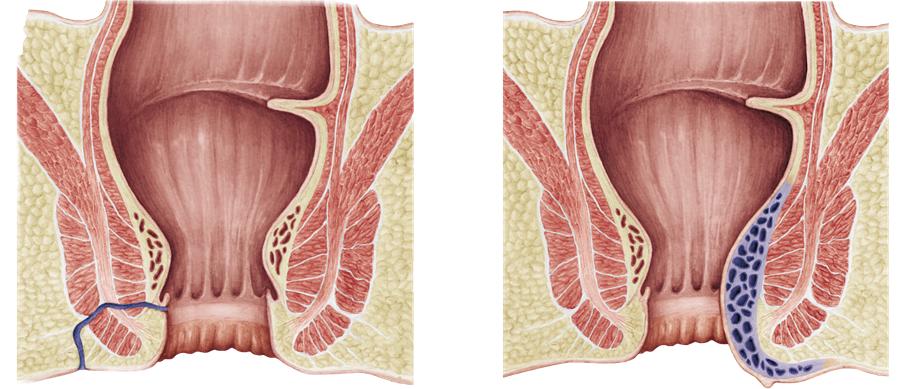
Recurrent Pilonidal Cysts: When More Extensive Surgery is Needed
In some cases, pilonidal cysts may reappear even after drainage. When this occurs, a more comprehensive surgical procedure may be required to remove the entire cyst, not just its contents. This approach aims to prevent future recurrences and provide a long-term solution.
What factors increase the likelihood of cyst recurrence?
- Incomplete removal of the original cyst
- Persistent irritation or friction in the affected area
- Genetic predisposition to cyst formation
Preventing Pilonidal Cysts: Lifestyle Changes and Best Practices
After experiencing a pilonidal cyst, taking steps to prevent future occurrences is crucial. Here are some effective prevention strategies:
- Avoid prolonged sitting periods. If your job requires extended sitting, take regular breaks to stand and walk around.
- Maintain a healthy weight, as excess weight can increase pressure on the affected area.
- Keep the area between your buttocks clean and dry. Choose breathable, well-fitting clothing to prevent sweat accumulation.
- Consider hair removal in the affected area to reduce the risk of ingrown hairs.
How often should you clean the area prone to pilonidal cysts? It’s recommended to clean the area at least once daily, and more frequently if you engage in activities that cause sweating or friction in the region.
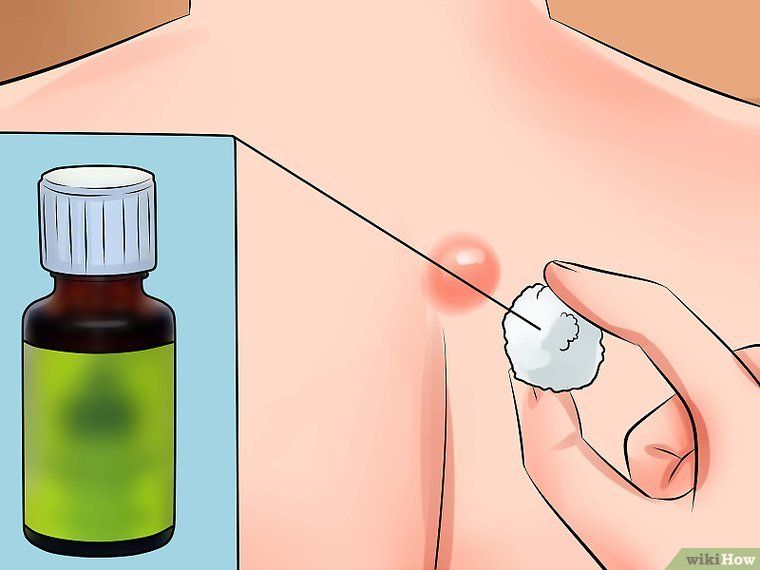
When to Seek Medical Attention for a Pilonidal Cyst
While home remedies can provide temporary relief, certain symptoms indicate the need for prompt medical attention:
- Severe pain or swelling in the affected area
- Signs of infection, such as fever, redness, or warmth around the cyst
- Drainage of pus or blood from the cyst
- Recurrence of cysts despite previous treatment
How quickly should you see a doctor if you suspect an infected pilonidal cyst? If you experience any signs of infection, it’s advisable to seek medical attention within 24-48 hours to prevent potential complications.
The Role of Proper Hygiene in Pilonidal Cyst Management
Maintaining excellent hygiene is crucial in both preventing and managing pilonidal cysts. Here are some key hygiene practices to incorporate into your routine:
- Use mild, antibacterial soap to clean the affected area daily.
- Pat the area dry thoroughly after bathing or showering.
- Change underwear daily and after sweating.
- Consider using talcum powder to keep the area dry, especially during hot weather or physical activity.
Are there specific clothing choices that can help prevent pilonidal cysts? Opt for loose-fitting, breathable clothing made from natural fibers like cotton. Avoid tight-fitting clothes that can trap moisture and increase friction in the affected area.
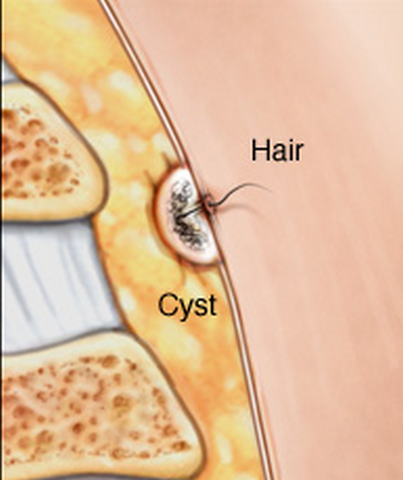
The Impact of Diet and Nutrition on Pilonidal Cyst Prevention
While diet doesn’t directly cause pilonidal cysts, maintaining a healthy diet can contribute to overall skin health and potentially reduce the risk of cyst formation. Consider incorporating these nutritional strategies:
- Stay hydrated to support skin elasticity and overall health.
- Consume foods rich in vitamins A and C, which are essential for skin health.
- Include zinc-rich foods in your diet to support wound healing.
- Maintain a balanced diet to support a healthy weight, reducing pressure on the affected area.
Can certain foods help prevent pilonidal cysts? While no specific foods directly prevent pilonidal cysts, a diet rich in fruits, vegetables, and lean proteins can support overall skin health and immune function, potentially reducing the risk of cyst formation and promoting faster healing if cysts do occur.
Alternative Therapies for Pilonidal Cyst Management
In addition to conventional treatments, some individuals explore alternative therapies to manage pilonidal cysts. While scientific evidence supporting these methods may be limited, some people report finding relief through:

- Tea tree oil applications for its potential antimicrobial properties
- Aloe vera gel to soothe inflammation and promote healing
- Castor oil packs to potentially draw out impurities
- Epsom salt baths to reduce inflammation and promote drainage
Is there scientific evidence supporting alternative therapies for pilonidal cysts? While anecdotal evidence exists for some alternative treatments, it’s important to note that scientific studies on their effectiveness for pilonidal cysts are limited. Always consult with a healthcare professional before trying alternative therapies, especially if you have an active infection or open wound.
The Psychological Impact of Pilonidal Cysts
Living with pilonidal cysts can have significant psychological effects on individuals. The chronic nature of the condition, coupled with discomfort and potential embarrassment, can lead to:
- Reduced self-esteem
- Anxiety about cyst recurrence
- Social isolation due to discomfort or embarrassment
- Stress related to ongoing medical treatments
How can individuals cope with the emotional aspects of living with pilonidal cysts? Seeking support from friends, family, or a mental health professional can be beneficial. Additionally, joining support groups or online communities for individuals with pilonidal cysts can provide a sense of community and shared experience.
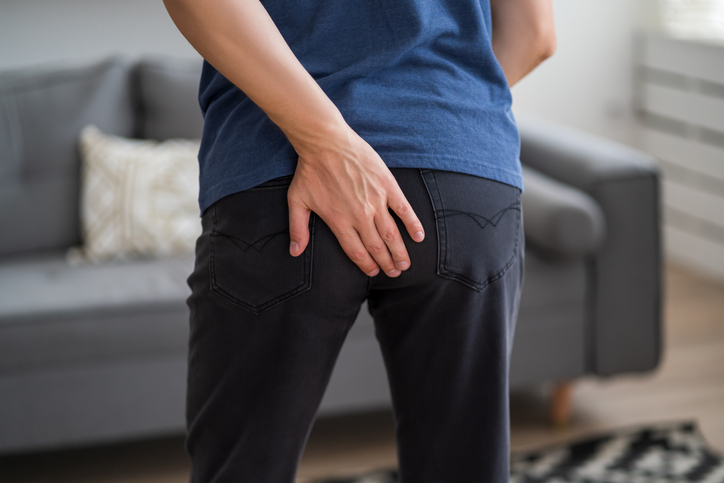
Emerging Research and Future Treatments for Pilonidal Cysts
As medical understanding of pilonidal cysts continues to evolve, researchers are exploring new treatment options and prevention strategies. Some areas of ongoing research include:
- Laser hair removal as a preventive measure
- Minimally invasive surgical techniques for cyst removal
- Biological therapies to promote faster healing post-surgery
- Genetic studies to identify predisposing factors for cyst formation
What promising new treatments are on the horizon for pilonidal cysts? While research is ongoing, some promising areas include the use of platelet-rich plasma (PRP) therapy to enhance healing and the development of specialized wound dressings designed to prevent recurrence after surgical intervention.
The Economic Impact of Pilonidal Cysts
Beyond the physical and emotional toll, pilonidal cysts can have significant economic implications for individuals and healthcare systems:
- Lost work days due to pain, discomfort, or surgical recovery
- Medical expenses associated with treatments and surgeries
- Costs of ongoing preventive care and hygiene products
- Potential long-term impact on career choices for those in professions requiring prolonged sitting
How can the economic burden of pilonidal cysts be mitigated? Early intervention and proper preventive care can help reduce the long-term economic impact of pilonidal cysts. Additionally, advocating for workplace accommodations, such as standing desks or ergonomic seating, can help individuals manage their condition while maintaining productivity.
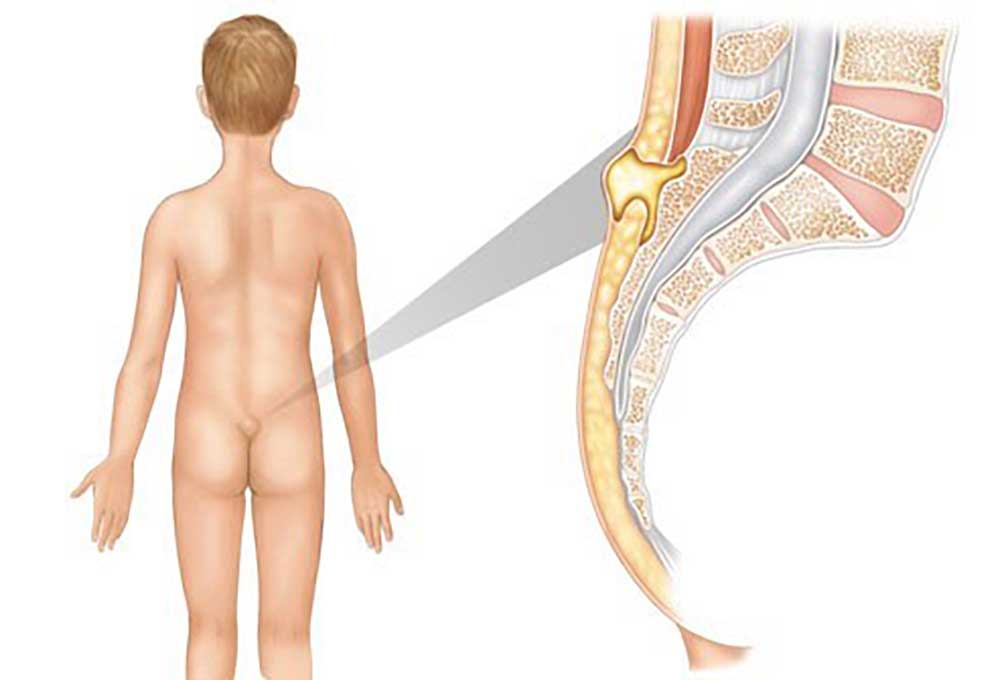
Pilonidal Cysts in Special Populations
While pilonidal cysts can affect anyone, certain populations may face unique challenges or considerations:
Pilonidal Cysts in Adolescents
Adolescents experiencing pilonidal cysts may face additional challenges due to:
- Body image concerns during a sensitive developmental period
- Difficulty discussing the condition with parents or healthcare providers
- Potential impact on participation in sports or other physical activities
How can parents support adolescents dealing with pilonidal cysts? Open communication, empathy, and providing accurate information about the condition can help adolescents navigate the challenges of pilonidal cysts. Encouraging regular check-ups and promoting good hygiene habits are also crucial.
Pilonidal Cysts During Pregnancy
Pregnant individuals may experience unique challenges with pilonidal cysts due to:
- Hormonal changes affecting skin and hair growth
- Limited treatment options due to pregnancy-related restrictions
- Increased discomfort due to weight gain and postural changes
What treatment options are safe for pregnant individuals with pilonidal cysts? Conservative management, including sitz baths and topical treatments, is often preferred during pregnancy. Any surgical interventions should be carefully evaluated and discussed with both an obstetrician and a surgeon to ensure the safety of both the mother and the fetus.
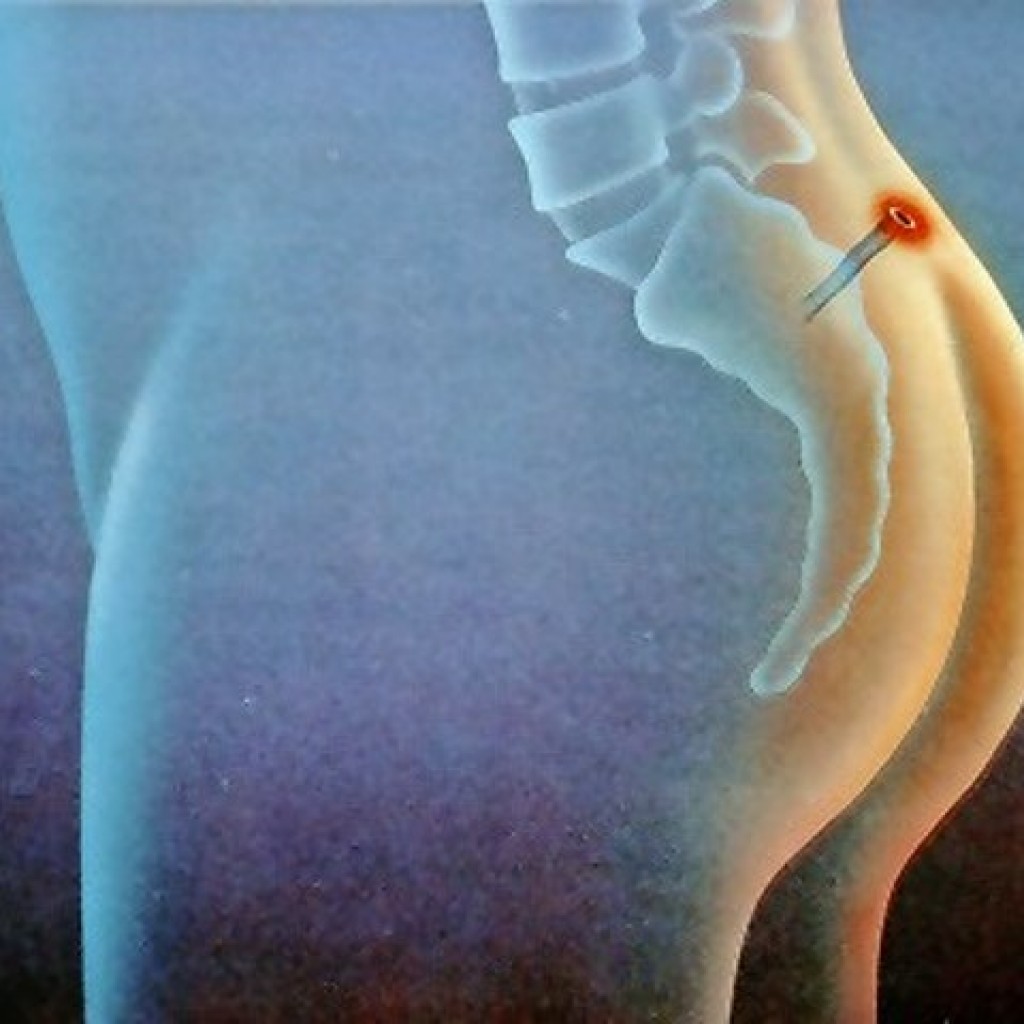
Pilonidal Cysts in Older Adults
Older adults with pilonidal cysts may face additional considerations:
- Slower healing due to age-related factors
- Increased risk of complications from surgery
- Potential interactions with other medical conditions or medications
How should treatment approaches be modified for older adults with pilonidal cysts? A comprehensive geriatric assessment should be conducted before determining the best treatment approach. Conservative management may be preferred when possible, and surgical interventions should be carefully weighed against potential risks.
The Role of Technology in Pilonidal Cyst Management
Advancements in technology are playing an increasingly important role in the diagnosis, treatment, and management of pilonidal cysts:
- Telemedicine consultations for initial assessments and follow-up care
- Mobile apps for tracking symptoms and managing post-operative care
- Advanced imaging techniques for more accurate diagnosis and surgical planning
- Robotic-assisted surgical procedures for improved precision and reduced recovery time
How is telemedicine changing the landscape of pilonidal cyst care? Telemedicine allows for remote consultations, reducing the need for in-person visits for routine check-ups or minor concerns. This can be particularly beneficial for patients in rural areas or those with limited mobility.
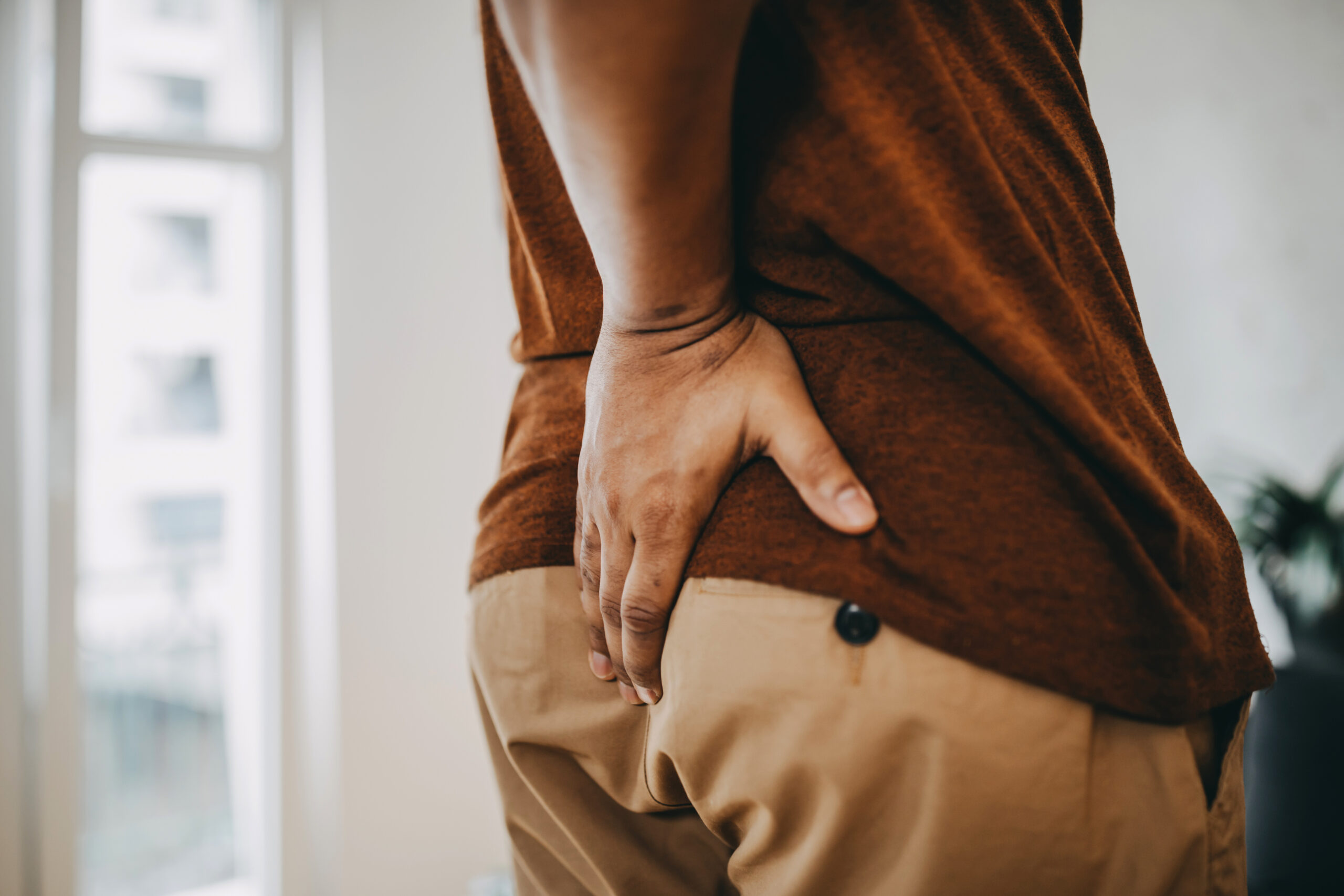
The Importance of Patient Education in Pilonidal Cyst Management
Effective management of pilonidal cysts relies heavily on patient education and engagement. Key areas of focus include:
- Understanding the causes and risk factors of pilonidal cysts
- Learning proper hygiene and self-care techniques
- Recognizing signs of infection or recurrence
- Understanding treatment options and post-operative care requirements
What resources are available for patients seeking information about pilonidal cysts? Many healthcare providers offer patient education materials, and reputable online sources such as medical association websites provide valuable information. Support groups and patient forums can also be helpful for sharing experiences and advice.
Home Remedies, When to See a Doctor
Pilonidal Cyst Home Treatment: Home Remedies, When to See a Doctor
- Health Conditions
- Featured
- Breast Cancer
- IBD
- Migraine
- Multiple Sclerosis (MS)
- Rheumatoid Arthritis
- Type 2 Diabetes
- Articles
- Acid Reflux
- ADHD
- Allergies
- Alzheimer’s & Dementia
- Bipolar Disorder
- Cancer
- Crohn’s Disease
- Chronic Pain
- Cold & Flu
- COPD
- Depression
- Fibromyalgia
- Heart Disease
- High Cholesterol
- HIV
- Hypertension
- IPF
- Osteoarthritis
- Psoriasis
- Skin Disorders and Care
- STDs
- Featured
- Discover
- Wellness Topics
- Nutrition
- Fitness
- Skin Care
- Sexual Health
- Women’s Health
- Mental Well-Being
- Sleep
- Product Reviews
- Vitamins & Supplements
- Sleep
- Mental Health
- Nutrition
- At-Home Testing
- CBD
- Men’s Health
- Original Series
- Fresh Food Fast
- Diagnosis Diaries
- You’re Not Alone
- Present Tense
- Video Series
- Youth in Focus
- Healthy Harvest
- No More Silence
- Future of Health
- Wellness Topics
- Plan
- Health Challenges
- Mindful Eating
- Sugar Savvy
- Move Your Body
- Gut Health
- Mood Foods
- Align Your Spine
- Find Care
- Primary Care
- Mental Health
- OB-GYN
- Dermatologists
- Neurologists
- Cardiologists
- Orthopedists
- Lifestyle Quizzes
- Weight Management
- Am I Depressed? A Quiz for Teens
- Are You a Workaholic?
- How Well Do You Sleep?
- Tools & Resources
- Health News
- Find a Diet
- Find Healthy Snacks
- Drugs A-Z
- Health A-Z
- Health Challenges
- Connect
- Breast Cancer
- Inflammatory Bowel Disease
- Psoriatic Arthritis
- Migraine
- Multiple Sclerosis
- Psoriasis
Medically reviewed by Debra Rose Wilson, Ph. D., MSN, R.N., IBCLC, AHN-BC, CHT — By Stephanie Watson — Updated on October 29, 2018
D., MSN, R.N., IBCLC, AHN-BC, CHT — By Stephanie Watson — Updated on October 29, 2018
What is a pilonidal cyst?
A pilonidal cyst is a sac filled with hair, skin, and other debris. It typically forms at the top of the buttocks, right between the cleft, which separates the two cheeks.
You can get a pilonidal cyst when a hair gets lodged inside your skin. Friction on the ingrown hair from sitting or rubbing can irritate your skin and cause the cyst to form.
Sometimes, these cysts become infected and a pocket of pus called an abscess forms.
Pilonidal cysts are more common in men and people who sit for long periods of time, such as office workers are truck drivers. You’re also more likely to get one of these cysts if you have thick, stiff body hair.
The only way to get rid of a pilonidal cyst is through a minor surgical procedure. But there are a few things you can do at home to ease pain and discomfort in the meantime.
Try applying a hot, wet compress to the cyst a few times a day. The heat will help pull out the pus, allowing the cyst to drain. This can relieve pain and itching.
The heat will help pull out the pus, allowing the cyst to drain. This can relieve pain and itching.
You might also try soaking the area in a warm, shallow bath. You can also try taking a sitz bath.
If the cyst hurts, you can take a nonsteroidal anti-inflammatory, such as ibuprofen (Advil).
A pilonidal cyst can look similar to a pimple, tempting some to pop them with their fingers. But popping a pilonidal cyst won’t fix the problem. Remember pilonidal cysts are filled with hair and other debris in addition to pus, and you won’t be able to get it all out by squeezing.
The location of pilonidal cysts can make it hard to see what you’re doing. You also run the risk of developing an infection or leaving a scar.
Pilonidal cysts are treated with a simple in-office procedure. A doctor will start by numbing the area with an injection of a local anesthetic. Next, they’ll use a surgical knife to make a small incision to help drain the pus and debris from the cyst.
Once everything has been removed from the cyst, they’ll pack the wound with sterile gauze or close it with stitches, depending on the location. Make sure to follow the wound care instructions from your doctor as you recover.
Sometimes, a pilonidal cyst will reappear in the same area, even if you recently had one drained. When this happens, you may need a more extensive surgical procedure to remove the entire cyst, not just the internal contents.
Once you’ve had a pilonidal cyst surgically drained, there are several things you can do to reduce your risk of developing another one.
First, try to avoid sitting for long periods of time, which places pressure on the area where pilonidal cysts develop. If you’re job requires you to sit for most of the day, try to set aside a few minutes every hour to stand up and take a quick walk.
Carrying extra weight can also make you more prone to developing pilonidal cysts. Your doctor can give you a better idea of whether your weight may be playing a role in your cysts.
Finally, try to keep the area between the cheeks of your buttocks as clean and dry as possible. Wearing correct-fitting clothes can help to prevent sweat from collecting there. In addition, consider removing any hair you have growing near the top of your buttocks.
Home treatments can relieve discomfort from a pilonidal cyst. But to get rid of it for good, you’ll need to see a doctor. To prevent cysts from forming again in the future, avoid prolonged sitting. Keep the area above your buttocks clean, dry, and free from hair.
Last medically reviewed on October 29, 2018
How we reviewed this article:
Healthline has strict sourcing guidelines and relies on peer-reviewed studies, academic research institutions, and medical associations. We avoid using tertiary references. You can learn more about how we ensure our content is accurate and current by reading our editorial policy.
- Mayo Clinic Staff. (2015). Pilonidal cyst.
mayoclinic.org/diseases-conditions/pilonidal-cyst/symptoms-causes/syc-20376329 - Pilonidal cyst.
 (n.d.).
(n.d.).
uvahealth.com/services/dermatology/pilonidal-cyst - Pilonidal cyst. (n.d.).
healthyhorns.utexas.edu/HT/HT_pilonidalcyst.html - Pilonidal cyst. (n.d.).
shs.uncg.edu/pilonidal-cyst - Pilonidal disease. (n.d.).
fascrs.org/patients/disease-condition/pilonidal-disease
Share this article
Medically reviewed by Debra Rose Wilson, Ph.D., MSN, R.N., IBCLC, AHN-BC, CHT — By Stephanie Watson — Updated on October 29, 2018
Read this next
- Pilonidal Cyst Surgery Procedures and Recovery
Pilonidal cyst incision and drainage is a relatively simple procedure. A pilonidal cystectomy is more complex, but may be more effective at preventing…
READ MORE
- Pilonidal Sinus
Medically reviewed by Xixi Luo, MD
A pilonidal sinus (PNS) is a small cyst or abscess that occurs in the cleft at the top of the buttocks. It can cause severe pain and often becomes…
READ MORE
- Understanding and Treating Tailbone Pain
Medically reviewed by William Morrison, M.
 D.
D.Tailbone pain is centered at the very bottom of your spine, right above your buttocks. If your symptoms don’t improve with treatment after a week, it…
READ MORE
- 5 Recommended Stretches to Soothe a Sore Tailbone
Medically reviewed by Daniel Bubnis, M.S., NASM-CPT, NASE Level II-CSS
A sore tailbone can make sitting and walking painful, but these yoga-inspired stretches will get you moving comfortably in no time.
READ MORE
- Oatmeal Baths: A Skin-Soothing Home Remedy
Medically reviewed by Debra Rose Wilson, Ph.D., MSN, R.N., IBCLC, AHN-BC, CHT
Oatmeal has anti-inflammatory properties, that when made into a bath, can soothe the skin. This home remedy can help ease the symptoms of diaper rash…
READ MORE
- Nevus Sebaceous: What You Should Know
Medically reviewed by Catherine Hannan, M.D.
A nevus sebaceous is a rare type of birthmark that can be found on the face, neck, forehead, or scalp. Check out pictures and what it means to have it.

READ MORE
- Evening Primrose Oil: Benefits, Uses, Side Effects
Medically reviewed by Debra Rose Wilson, Ph.D., MSN, R.N., IBCLC, AHN-BC, CHT
Evening primrose oil has been touted as a remedy for everything from acne and PMS to high blood pressure. Learn the uses and side effects.
READ MORE
- What Causes Excessive Scrotal Sweating, and How Can I Treat It?
If excessive testicular sweating is interfering with your day-to-day life, these treatments may help. Learn about the causes of excessive testicular…
READ MORE
- How to Remove Scars on Legs
Medically reviewed by Cynthia Cobb, DNP, APRN, WHNP-BC, FAANP
Here are simple tips to reduce the appearance of scars. Whether you want to know how to get rid of scars on your legs or other areas, here’s what to…
READ MORE
- What Causes a Melasma Mustache and How to Treat It
Medically reviewed by Susan Bard, MD
Melasma is a skin condition that causes grayish-brown patches to appear, mostly on the face.
 When it appears on the upper lip, it’s referred to as a…
When it appears on the upper lip, it’s referred to as a…READ MORE
How To Drain Pilonidal Cyst Yourself?
Views: 34,287
Suffering from pilonidal cyst? You must be eager to squeeze the pilonidal cyst in the same way you do it with your pimples. The difference is you may be able to get rid of pimples that way but do not think that way with a pilonidal cyst. You can not get away with it by squeezing the pilonidal cyst.
Pristyn Care Team
Updated on 22nd March 2021
Social share:
.
Book Your Consultation Now
Patient Name
Mobile Number
Select City
Select Disease
Dedicated Support at Every Step!
Our Doctors are available 24 hours a day, 7 days a week to help you!
Suffering from pilonidal cyst? You must be eager to squeeze the pilonidal cyst in the same way you do it with your pimples. The difference is you may be able to get rid of pimples that way but do not think that way with a pilonidal cyst. You can not get away with it by squeezing the pilonidal cyst.
You can not get away with it by squeezing the pilonidal cyst.
Table of Contents
How can I treat pilonidal sinus at home?
First thing, you cannot drain pilonidal cyst yourself. You may need help from one of your family members. Also, do not cut pilonidal cyst yourself. You can infect yourself by slicing the unaffected are too and gradually the infection may spread. In case if the cut you make gets deeper, then you may not be able to sew it on your own. Here are some natural remedies for a pilonidal cyst that you can consider at home.
Castor oil:
Castor oil is anti-inflammatory that aids in pain relief and inflammation reduction. It can be a very effective home remedy for pilonidal cysts. It also helps in boosting the healing of wounds. See how to apply:
- Dip a cotton swab in castor oil.
- Rub it on the affected area and cover it with a bandage.
- You can apply it 2-3 times a day.

- Wash your hand before and after applying the oil to the affected area.
Aloe vera:
Aloe vera has always been effective in treating skin problems. It can be a powerful home remedy for pilonidal cyst. The anti-inflammatory and anti-bacterial agents found in aloe vera are effective for easing the discomfort and fostering the process of healing pilonidal cysts.
Neem:
There are several home remedies for pilonidal cyst that originate in India and one of them is Neem. There are two ways to use neem:
- Grind Neem leaves and apply to the affected areas for about 20 minutes. Then, you can use lukewarm water to wash the areas.
- Another way is to put neem leaves in water and boil them until the amount of water reduces to half. Let the mixture cool and use it to wash cysts.
Warm compress:
Apply warm compress to the affected area to get relief from pain.
 It helps with pus and discharge in pilonidal cyst to foster the healing process. However, warm compress is not responsible for preventing the development of pilonidal cyst. You can do it 2-3 times a day.
It helps with pus and discharge in pilonidal cyst to foster the healing process. However, warm compress is not responsible for preventing the development of pilonidal cyst. You can do it 2-3 times a day. Honey:
Honey is, in general, healthy food and one of the best home remedies for a lot of health problems. It is all due to its anti-inflammatory and antiseptic properties. It helps in reducing the symptoms of pilonidal cyst faster. How to use it? Use raw honey and apply it to the affected area. Let it flush out the pus and toxins from the wound. Wash it in 15 – 20 minutes and clean the affected area with clean clothes.
Turmeric:
Similar to honey, turmeric is also effective for pilonidal cyst. It helps relieve pain and inflammation. One is you can apply it and another option is drinking turmeric milk. This is how you can apply turmeric:
- Add one teaspoon of turmeric to water and make a paste.
- Apply the paste on the cyst and let it dry.

- Rinse or clean it with warm water.
- You can do it twice a day.
We take care of you
Get Your Surgery Done with
No Cost EMI, Hassle-free Insurance Approval
Doctor available
4.5/5
27 Years Experience Overall
Doctor available
5/5
27 Years Experience Overall
Doctor available
4.5/5
26 Years Experience Overall
Doctor available
Dr. Milind Joshi
MBBS, MS – General Surgery
₹1200₹600Consultation Fee
4.7/5
23 Years Experience Overall
You need to take care of the wound in the following ways:
- Keep the affected area dry and clean.
- Rinse off the area with water and a clean cloth or soft wipes after using the washroom.
- Try to avoid creams or gels on the infected areas since it can cause irritate the skin.
- Avoid prolonged sitting to banish cyst or such skin problems and foster the healing process.
- Avoid touching and squeezing the cysts.

- Cover the cysts with a bandage to protect the wound to ease your regular movement.
- Avoid stretching your anorectal area to prevent further damage.
Pristyncare App
Download app to get more features for free
Check Symptoms
Cowin Certificate
Period Tracker
Dental Aligners
Take Away
If you drain a pilonidal cyst at home, the chances are higher pilonidal cyst recurs. To avoid recurrence of pilonidal cyst, the best way is to get rid of it surgically. If there are small cysts and are not recurring then the above home remedies can help you treat them but medical intervention is important. You can contact us or write below to know about pilonidal cyst and its treatment. Know what Pristyn Care offers you. You can do online consultation with our experts who will be happy to serve you.
Other Articles
Book Your Consultation Now
Patient Name
Mobile Number
Select City
Select Disease
×
- please enter 10 digit number.

- Select City
diagnosis and treatment of pilonidal cyst in Moscow
Epithelial coccygeal passage (pilonidal or coccygeal cyst) – inflammation of the canal in the circumference of the intergluteal fold, coccyx or sacrum. The stroke is formed in the womb. This is a cavity or channel, inside which are skin, sebaceous glands, dormant and active hair follicles, connective tissue. The canal starts from the outside above the anus above the anus, goes deep and rests against the tissue. Outside this one-way channel goes out a group of tiny holes (rarely – one), which can be overlooked for a lifetime if inflammation never occurs in the channel (this is possible).
Sometimes hair grows right inside the canal. Through the holes, the discharge of glands, epithelial cells, and dead hair come out. An infection from outside can also penetrate here. If there is no inflammation, the holes are painless, the epithelial coccygeal passage exists without symptoms or with a barely noticeable discharge from it, skin moisture in the fold of the buttocks, and occasionally itching. Then we can talk about asymptomatic ECX; this form does not require treatment – only hygiene and control by a coloproctologist once a year or less.
Then we can talk about asymptomatic ECX; this form does not require treatment – only hygiene and control by a coloproctologist once a year or less.
The epithelial coccygeal passage is also called, albeit less often, epithelial immersions of the sacrococcygeal region, dermoid cyst, fistula, pilonidal sinus of the coccyx, pilonidal disease.
Epithelial coccygeal tract symptoms
If the epithelial passage clogs the contents of the glands, hair fragments, dead cells of the dermis, or it is mechanically injured from the outside, inflammation begins. In its focus – fatty tissue. A painful abscess grows. Often it spontaneously breaks through and evacuates to the outside. Although after this the pain goes away and relief comes, these arbitrary breakthroughs without debridement threaten to turn into a fistula, where pus will accumulate already in the fistula channel, it will become difficult to evacuate.
Among the symptoms of the epithelial coccygeal passage in the stage of inflammation, the following are especially pronounced:
- pain in the coccyx, sacrum, buttocks – may be shooting, dull, throbbing;
- firm, swollen painful mass above or on the side of the anus;
- swelling, redness of the tissues between and around the buttocks, induration in the inflamed area;
- discharge of pus in the abscess area.

ECX complications
If the epithelial coccygeal tract is not treated or therapy is delayed, the inflammation in the course will remain and become chronic. In remission, there will be almost no symptoms, except for mild discharge. But the focus remains, and the disease can recur at any time: often or every few years. In a chronic course, infiltrates appear in the epithelial coccygeal course, constantly recurring abscesses, fistulas with pus inside; pain becomes permanent.
Causes of epithelial coccygeal passage
There are several versions of why a person has an epithelial coccygeal passage in general. One of the reasons is attributed to the embryonic period, when this violation is laid: thin channels are formed in the sacrum, resembling pores lined with epithelium and hair, passing through the sebaceous and sweat glands. Another reason for the formation of the epithelial coccygeal passage is the activity of the hormonal background, which is accompanied by intensive hair growth throughout the body, including in the gluteal fold.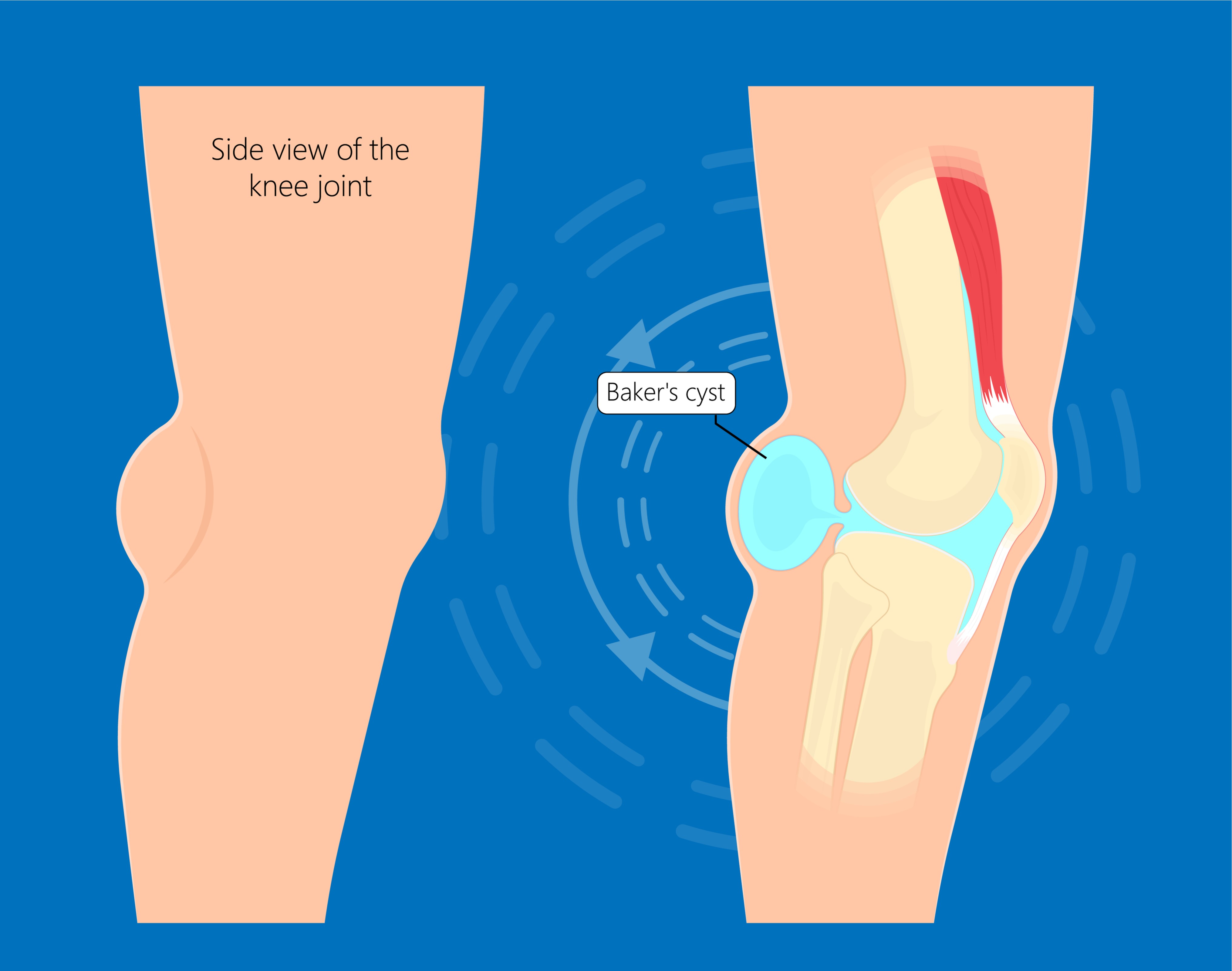 A pronounced crease between the buttocks, large buttocks is also mentioned as a physiological factor in correlation with the formation of ECX.
A pronounced crease between the buttocks, large buttocks is also mentioned as a physiological factor in correlation with the formation of ECX.
The mechanism of initiation of the epithelial coccygeal passage has long been debatable. In the fifties of the XX century, an explanation became dominant, which still causes bewilderment of patients, as well as the surgeons themselves. The intergluteal fold, due to its anatomy, is predisposed to hypermoistening, it experiences pressure with underwear for a long time, and is inconvenient for self-examination. When walking in the crease of the buttocks, the effect of a wind tunnel or a vacuum pump occurs. The hair that has got here under this pressure is introduced into the skin, pushed through to the subcutaneous tissue, injures it and brings infection with it; there is a cavity of inflammation.
ECH occurs more frequently in men than in women. The epithelial coccygeal passage is found in every twenty-sixth per 100 thousand of the population – an indicator for not the most common diseases.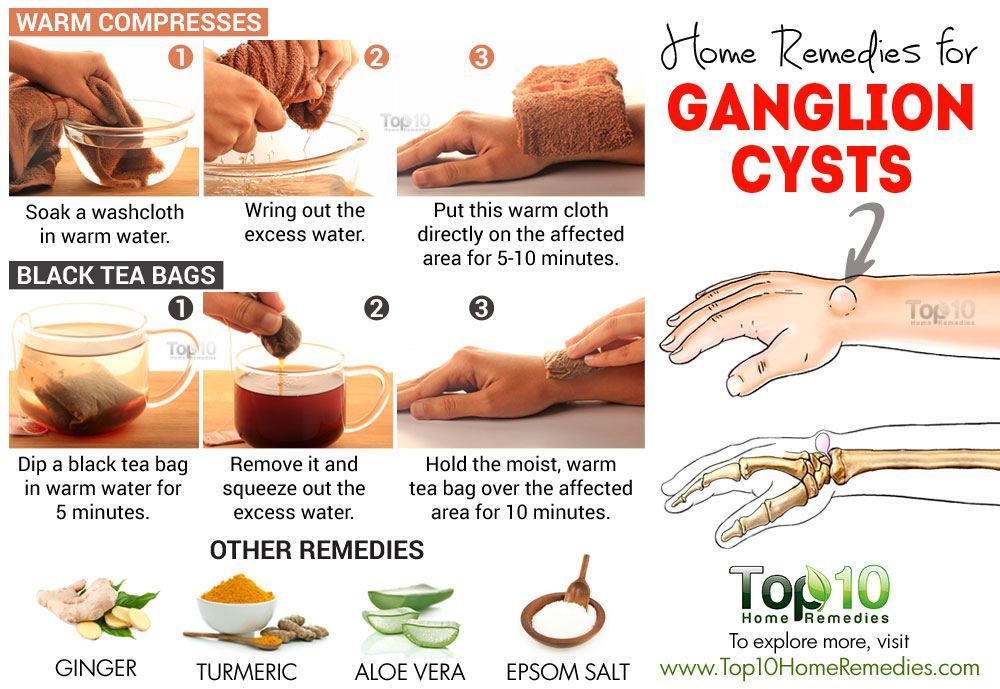 Most often, ECX becomes inflamed from puberty until about 30 years of age. There is evidence of a more frequent presence of the epithelial coccygeal passage in Caucasian ethnic groups, Arabs, African Americans.
Most often, ECX becomes inflamed from puberty until about 30 years of age. There is evidence of a more frequent presence of the epithelial coccygeal passage in Caucasian ethnic groups, Arabs, African Americans.
It is possible to establish non-specific general factors that predispose to epithelial coccygeal tract: intense hair growth and body weight above average, mediocre hygiene, coupled with prolonged sitting, tight synthetic clothing.
Epithelial coccygeal tract diagnostics
A pilonidal cyst can often be detected from the patient’s story along with an examination of the sacral and adjacent areas; sometimes a digital examination of the rectum is justified, instrumental studies are more often with extensive abscessing or atypical development of a cyst. Tell the doctor when you first noticed the changes and complained about the coccyx, whether there was suppuration, whether the abscess opened itself.
Instrumental methods for diagnosing the epithelial coccygeal passage will help to accurately calculate the depth and area of the abscess, to assess the timing and likelihood of recurrence. Most often, they resort to ultrasound of the sacrum: it shows the size of the purulent cavity, the depth of the abscess, when examination and palpation of the area are difficult, it allows you to plan the volume of the surgical operation, the method of forming a suture after excision of the ECX itself. To add information about the direction of occurrence of purulent cavities and passages, their connections, to plan the operation already in detail, fistulography is performed – x-ray of the sacrum with the introduction of a contrast suspension into the coccygeal passage.
Most often, they resort to ultrasound of the sacrum: it shows the size of the purulent cavity, the depth of the abscess, when examination and palpation of the area are difficult, it allows you to plan the volume of the surgical operation, the method of forming a suture after excision of the ECX itself. To add information about the direction of occurrence of purulent cavities and passages, their connections, to plan the operation already in detail, fistulography is performed – x-ray of the sacrum with the introduction of a contrast suspension into the coccygeal passage.
For the differential diagnosis of the epithelial coccygeal passage with the pathology of the rectum, an examination of the mucosa of the final intestine with an optical anoscope will be required. For example, if you need to distinguish ECX from an intestinal fistula, soft tissue tumors around the coccyx and sacrum, embryonic disorders. And if you need extensive projections of images of the sacrum, pelvis, if ECX continuously recurs, if there is a complex comorbidity, MRI of the pelvic organs will be performed.
Is it necessary to treat the epithelial coccygeal tract
The form of the disease determines the decision on the treatment of epithelial coccygeal passage and methods of therapy. The asymptomatic form of ECC, when a cyst is found by chance and does not manifest itself in any way, does not need immediate intervention. Here, for the prevention of cysts, it will be enough to have high-quality daily hygiene, protect the sacrum from injury, wear loose comfortable clothes made of hypoallergenic natural fabric, and carefully shave the intergluteal furrow. However, it is necessary to be prepared for the fact that preventive actions alone cannot completely protect against the epithelial coccygeal passage and the occurrence of complications associated with it.
When the ECX abscess progresses in the form of an infiltrate, when growing pain and swelling in the areas of the coccyx, sacrum, between the buttocks and the temperature rises, the process can be interrupted by oral administration of an antibiotic and removal of the hair or hair bundle that has penetrated into the dermis and fiber.
Keep in mind: even if the symptoms of the epithelial coccygeal passage are not too intense, increasing slowly, do not hesitate to visit a doctor and be examined for activation of ECX inflammation, eliminate the risk of a dangerous course, plan the time, methods, and order of treatment.
Response is important to capture the state of the abscess when surgical treatment is needed, before it overflows into an infiltrate when this treatment is not useful. It happens that visual and digital examination is not enough to calculate the stage of the epithelial coccygeal passage; part of the time will be spent on instrumental methods. Finally, with an acute abscess, surgical treatment will be urgent: the task will be to quickly evacuate pus, get rid of pain, and make the patient feel better.
Protracted inflammation of the ECC will be accompanied by persistent intense pain, prolonged disability, a noticeable drop in the quality of life, complications even after radical surgery, further complicating this stage of therapy.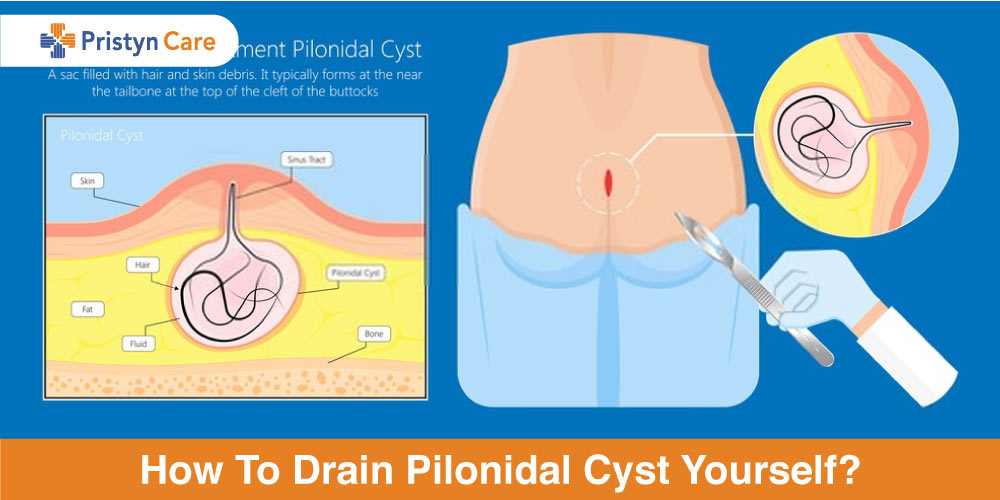
Treatment of epithelial coccygeal tract
Treatment of a dermoid cyst of the coccyx until recovery is possible only with a surgical method. All alternative conservative techniques will not be able to eliminate the source and cause of inflammation. If you delay the operation, the abscess gradually covers the entire area of the coccyx and sacrum; abscesses pass from the sacrum in breadth, throughout the perineum. The operation of the epithelial coccygeal passage is inevitable here too, but risks becoming more extensive.
It is important to understand: the opening of a purulent abscess will only remove the pain and give the patient relief in the moment, but does not mean the elimination of the pathology itself. Most often, a pilonidal cyst develops into a chronic cyst. It is possible to recover only with the total removal of the epithelial coccygeal passage with all its branches.
Treatment of ECC in the abscess stage
With extensive suppuration, it is first necessary to cure the purulent focus permanently.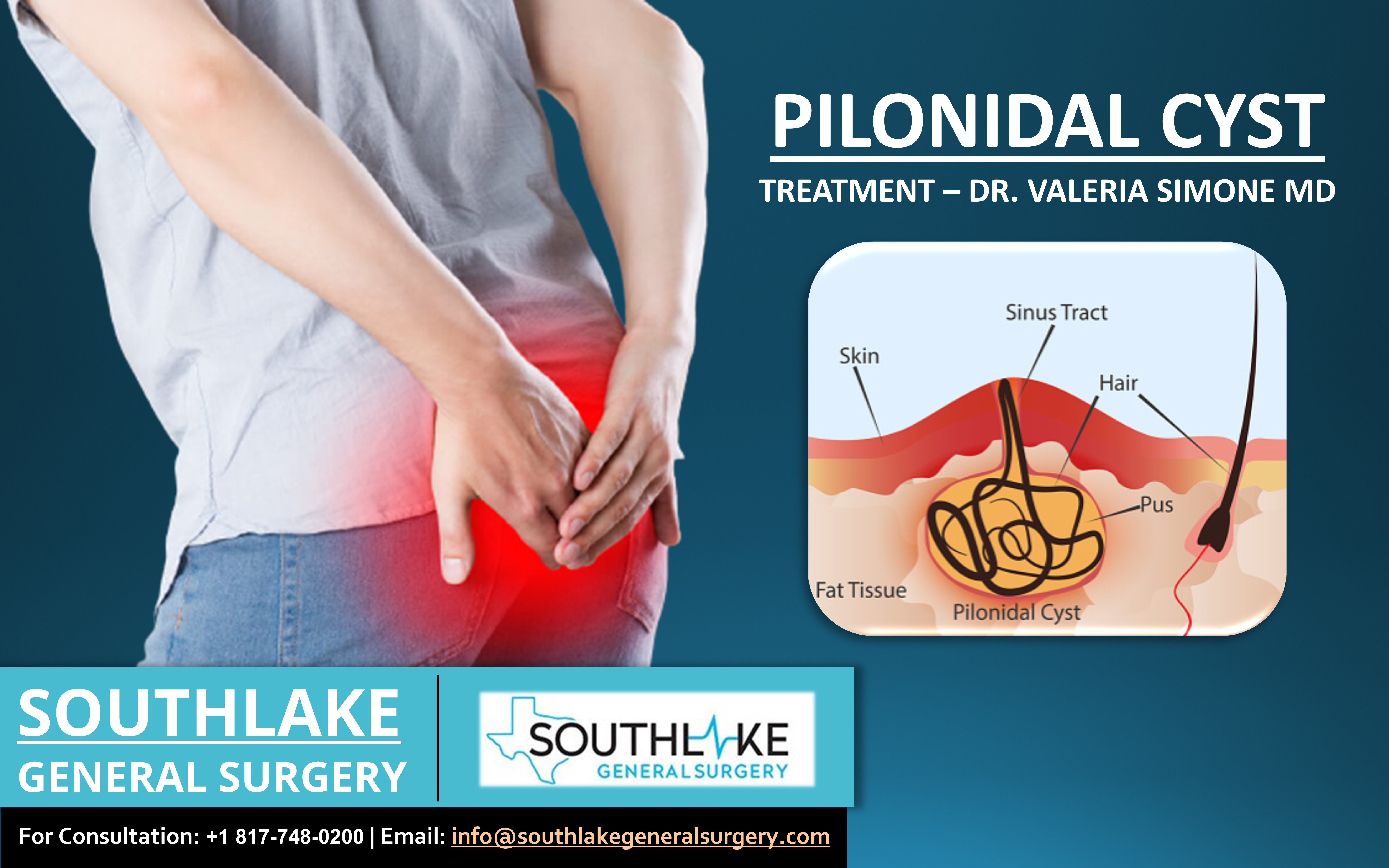 It is important to carefully remove all the pus, sanitize the tissues around, interrupt the spread of the abscess in breadth.
It is important to carefully remove all the pus, sanitize the tissues around, interrupt the spread of the abscess in breadth.
The incision for opening should be minimal and as close as possible to the intergluteal crease. During the main operation, the scar will have to be removed with a monolith along with the body of the cyst. The farther and wider the scar of the epithelial coccygeal passage, the more tissue will need to be captured. At the same time, the incision should not be too small so as not to interfere with the drainage of the focus.
The first acute pain will disappear already at the first stage; it will completely subside in a couple of weeks after the completion of drainage and sanitation of the focus of the epithelial coccygeal passage. After the correct opening of the inflamed ECC, symptomatic manipulations are transferred to volumetric surgical ones. Only occasionally, with a small size of the abscess, is a one-stage intervention sufficient for acute inflammation of the dermoid cyst.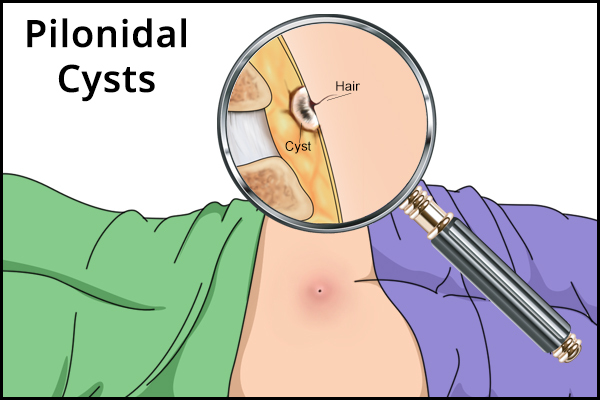 The optimal timing for planning the next, already radical stage is three to four weeks after the completion of the drainage of the cyst abscess.
The optimal timing for planning the next, already radical stage is three to four weeks after the completion of the drainage of the cyst abscess.
Preparation for the surgical stage
On the eve of hospitalization, it is important to carefully shave the area inside the buttocks and around the sacrum. In a few days, you can do laser or photoepilation. The effect of hardware hair removal will not appear immediately, so it is worth laying up to two weeks before the operation to expect all the hair to fall out. Shaving the skin is faster and cheaper, but there is a risk of cutting and infecting the skin.
The second and last requirement to prepare for the operation to remove the epithelial coccygeal passage is to refuse dinner and drink eight hours before the operation.
Treatment of piloid cyst in chronic course and recurrent form
All interventions used can be divided into minimally invasive and radical with deaf suturing.
Minimally invasive methods of treating epithelial coccygeal passage include sinusectomy, as well as the destruction of the ECC with a laser. Their advantages are in the minimal duration of restriction of movement and activity after treatment. It is possible to return to normal activities on the day of treatment, however, such interventions themselves are only suitable for small-sized ECX. The doctor makes the calculation of the volume of the operation after ultrasound.
Sinusectomy is possible if the pilonidal cyst has no branches, lateral streaks, or epithelial passages. The doctor most economically excised the cyst with a scalpel; the cosmetic result after an experienced hand is outstanding.
During laser ablation, the doctor processes the cyst passages with a diode laser with a wavelength specially calculated for this area. The LED delivers the laser into the tissue; its processing takes up to half an hour, depending on the length of the stroke, the intensity of the disease. Since the laser “sees” only the affected tissue, the technology is minimally painful, eliminates trauma and bleeding from blood vessels, and promises quick rehabilitation.
Since the laser “sees” only the affected tissue, the technology is minimally painful, eliminates trauma and bleeding from blood vessels, and promises quick rehabilitation.
In Russia, radical excision of the epithelial coccygeal passage is most often preferred, followed by plasty of the area with allogeneic tissue. However, opinions differ on the safety and sensitivity of this approach. On the one hand, with a qualified intervention, recurrence of the epithelial coccygeal passage occurs less frequently than in 5% of cases, and patients also easily tolerate it. The main disadvantage of the approach is the need for a careful regimen and restriction of activity up to several weeks after treatment.
Radical ECC therapy is now broken down into modifications. Among them:
- Excision of the epithelial coccygeal passage with the movement of muscle flaps: after the operation, a flap is created from the fascia and muscles, which covers the operation area, that is, native tissue is involved in the restoration.
 The flap becomes a scaffold that holds the edges of the wound, making it immobile. Fascia is an incredibly durable material for the sheath of the muscle and the surgical flap. The flap becomes a barrier to traumatic wound tension and protects it from stress, which often destroys the treatment. The technique is also distinguished by a quick recovery in relation to a small access incision, rare complications, and a successful cosmetic effect (the scar is hidden in the intergluteal crease and is barely noticeable).
The flap becomes a scaffold that holds the edges of the wound, making it immobile. Fascia is an incredibly durable material for the sheath of the muscle and the surgical flap. The flap becomes a barrier to traumatic wound tension and protects it from stress, which often destroys the treatment. The technique is also distinguished by a quick recovery in relation to a small access incision, rare complications, and a successful cosmetic effect (the scar is hidden in the intergluteal crease and is barely noticeable). - Excision of a piloid cyst and its plasty according to Karidakis: radical removal of the cyst body through an incision slightly displaced to the side from its midline, to the side of the intergluteal sulcus. This operation is also characterized by a small number of relapses and noted complications. The vulnerable side of the methodology is a cosmetic feature: the scar is outside the gluteal sulcus.
- Excision of the epithelial coccygeal duct and subsequent Basque plasty: in this approach, only small areas of tissue are removed and the subcutaneous tissue is left, from where the primary openings of the epithelial tract extend.
 A large cyst is excised through an incision on the side of the fold. The technique remains debatable and finds opponents today.
A large cyst is excised through an incision on the side of the fold. The technique remains debatable and finds opponents today. - Marsupilization (previously popular technique) — excision of the coccygeal passage together with the skin around it, all layers of subcutaneous fat and suturing the edges of the skin to the wound bottom. Now it is almost never used: protracted rehabilitation and dubious cosmetic results are replaced by more gentle approaches.
After epithelial coccygeal tract surgery
The main focus of the surgeon’s efforts after the removal of the piloid cyst is to work with the tissue defect. On the sacrum, the subcutaneous fat is closed with the local aponeurosis and fasciae; when the defect is closed with its own tissue, any movement begins its tension, and this is fraught with wound divergence, slowing down healing. This problem is especially acute in the recurrent and chronic course of ECC inflammation.
Skin and subcutaneous flaps to cover the defect from the cyst are of different types and shapes (V-, Y-, Z-shaped, Limberg-flap). The type of flap, the approach to plastic surgery is selected by the doctor, taking into account the type of operation, the area of the excised tissue, and the wishes of the patient.
The type of flap, the approach to plastic surgery is selected by the doctor, taking into account the type of operation, the area of the excised tissue, and the wishes of the patient.
After the operation to excise the epithelial coccygeal passage, the final recovery will take an average of three weeks, in some cases – a month or three. The period of incapacity for work will be within three weeks; at the same time, already on the second, and sometimes the first day, the patient will be transferred from the hospital to outpatient care. It is important to overcome the first days of discomfort, when the operated wound is drained to drain the discharge.
In this and outpatient periods, the patient will be dressed and checked for healing dynamics. The attending physician will teach you how to maintain a safe rest and work regime in the first period after the operation to remove the epithelial coccygeal passage. Occasionally, with inactive wound healing, the patient may receive a course of taking an antibacterial drug. Sometimes the tightening of the wound is monitored by ultrasound.
Sometimes the tightening of the wound is monitored by ultrasound.
Prediction and prevention of recurrence of the epithelial coccygeal passage
Recurrence of the epithelial coccygeal passage is considered a separate form of ECX disease; it may occur a year or more after the first radical treatment of a dermoid cyst. It is believed that the risk group includes patients who underwent a sparing and insufficient volume of excision of the epithelial coccygeal passage during the primary treatment, and patients in whom wounds heal genetically slowly and tissues are renewed.
If a recurrence of ECC has already occurred, a repetition of surgical correction is inevitable. This time it will become more complicated due to scarring of the operating area; may increase the duration of hospitalization; cosmetic defect will become more noticeable.
The risk of recurrence of the epithelial coccygeal tract remains with both more cautious and radical treatment steps. To minimize this risk, it is worth taking the time to recommend:
To minimize this risk, it is worth taking the time to recommend:
- conduct disciplined hygiene and care of the operated wound, the approaches to which will be indicated by the medical staff;
- carefully shave the area of the sacrum, coccyx three months after treatment;
- Sitting limited for the first two weeks, standing, lying down, moving more often;
- refrain from sports, hard work for two months;
- to visit the doctor in a disciplined manner according to the schedule, which will be offered depending on the state of health, stage, type of operation.
Treatment of the epithelial coccygeal tract at the Federal Research and Clinical Center of the Federal Medical and Biological Agency of Russia
In the Department of Coloproctology of the Center, coloproctologists will take into work even complex cases of the course of ECC – a recurrent cyst, an abscess in the acute stage, a coccyx cyst with combined pathology, against the background of the treatment of diseases of adjacent areas using simultaneous surgery.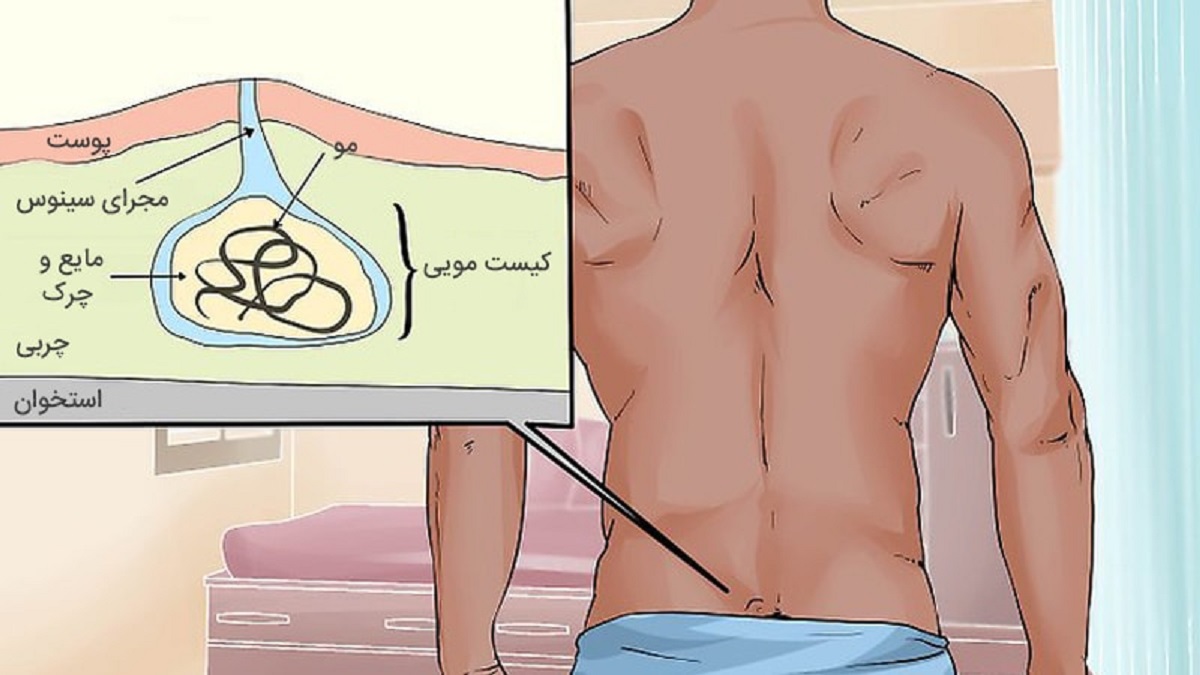 The main principle here is an integrated approach, including a consultation approach. All the required diagnostics of the epithelial coccygeal passage, including complex instrumental and differential diagnostics, can be performed while staying within the walls of the Center. Surgical, coloproctological patients are included in the fast-track rehabilitation algorithms widely practiced in the clinic – new techniques for recovery and physical activation after volumetric treatment.
The main principle here is an integrated approach, including a consultation approach. All the required diagnostics of the epithelial coccygeal passage, including complex instrumental and differential diagnostics, can be performed while staying within the walls of the Center. Surgical, coloproctological patients are included in the fast-track rehabilitation algorithms widely practiced in the clinic – new techniques for recovery and physical activation after volumetric treatment.
The advantage in all cases of the course of the disease will be given to minimally invasive surgery, including laser, laparo- and endoscopic, with the priority of minimal access, tissue preservation, protection of surrounding tissues, vessels, structures. In particular, for the treatment of epithelial coccygeal tract, original laser techniques FiLaC, LHP, SiLaC developed by the German manufacturer Biolitec have been introduced.
Doctors work on ultrasonic harmonic and bipolar scalpels, as well as on devices of Austrian design, perform complex multi-stage plastic-reconstructive operations. For the treatment of chronic conditions, botulinum toxin preparations, harmonic fistula dissection, and tissue electrocoagulation are used. For poorly healing wounds, plasmolifting (tissue enrichment with own plasma preparations) is used in conjunction with botulinum therapy.
For the treatment of chronic conditions, botulinum toxin preparations, harmonic fistula dissection, and tissue electrocoagulation are used. For poorly healing wounds, plasmolifting (tissue enrichment with own plasma preparations) is used in conjunction with botulinum therapy.
The coloproctologist surgeon measures the success of the intervention not only by the recovery of the patient, but also by the aesthetic parameters of the treatment performed, the speed of recovery and return to the life familiar to the patient.
This article is an informational material and is not intended for self-diagnosis and self-treatment. If signs of discomfort appear, you should contact your doctor.
causes and treatment of festering epithelial coccygeal tract
Content↓[show]
Purulent coccyx cyst is an inflammatory process under the skin in the sacrococcygeal region, found most often in young men. A cyst of the sacrococcygeal region appears as a result of various factors:
- Congenital anomaly, which is formed in violation of embryonic development at an early stage of pregnancy.

- The anomaly is formed during maturation due to incorrect hair escalation.
- May develop with a sedentary lifestyle.
- Weak immune system can cause disease.
- Genetic predisposition, trauma and other factors.
Pathologies of the sacrococcygeal region are treated in the coloproctology department of the Yusupov hospital. The Yusupov Hospital is a multidisciplinary medical center, which includes several clinics, a clinical laboratory, a diagnostic and rehabilitation center, and a hospital. The hospital performs surgical operations in operating rooms equipped with innovative installations. For the treatment of patients, the latest world developments in the field of medicine, medicines certified in Russia are used. Consultations and treatment of patients are carried out by experienced doctors: doctors of sciences, professors, highly qualified doctors, patients are provided with various types of medical care.
Causes
An abnormal pathology is formed in the sacrococcygeal region – a passage under the skin, which opens outwards with one or more small holes along the midline between the buttocks. The length of the epithelial coccygeal passage is about 3 centimeters. The epithelial coccygeal passage may not show clinical signs throughout life, the patient may learn about the presence of an anomaly in the development of the inflammatory process, the development of a purulent cyst of the coccygeal passage. The cause of the development of suppuration of the coccyx cyst is various injuries, hypothermia, infections, and poor hygiene. The epithelium lining the cavity of the pilonidal cyst of the coccyx has the same properties as human skin – it releases waste products, sweat.
The length of the epithelial coccygeal passage is about 3 centimeters. The epithelial coccygeal passage may not show clinical signs throughout life, the patient may learn about the presence of an anomaly in the development of the inflammatory process, the development of a purulent cyst of the coccygeal passage. The cause of the development of suppuration of the coccyx cyst is various injuries, hypothermia, infections, and poor hygiene. The epithelium lining the cavity of the pilonidal cyst of the coccyx has the same properties as human skin – it releases waste products, sweat.
Waste products are excreted through pinholes of the epithelial duct. If an injury or infection occurs, the primary epithelial passage is blocked, an acute process begins, which leads to the development of complications. There is a destruction of the walls of the epithelial coccygeal passage, inflammation spreads to the surrounding tissue. As a result of the inflammatory process, phlegmon, purulent fistulas, and an abscess of the sacrococcygeal region may develop in the coccygeal passage.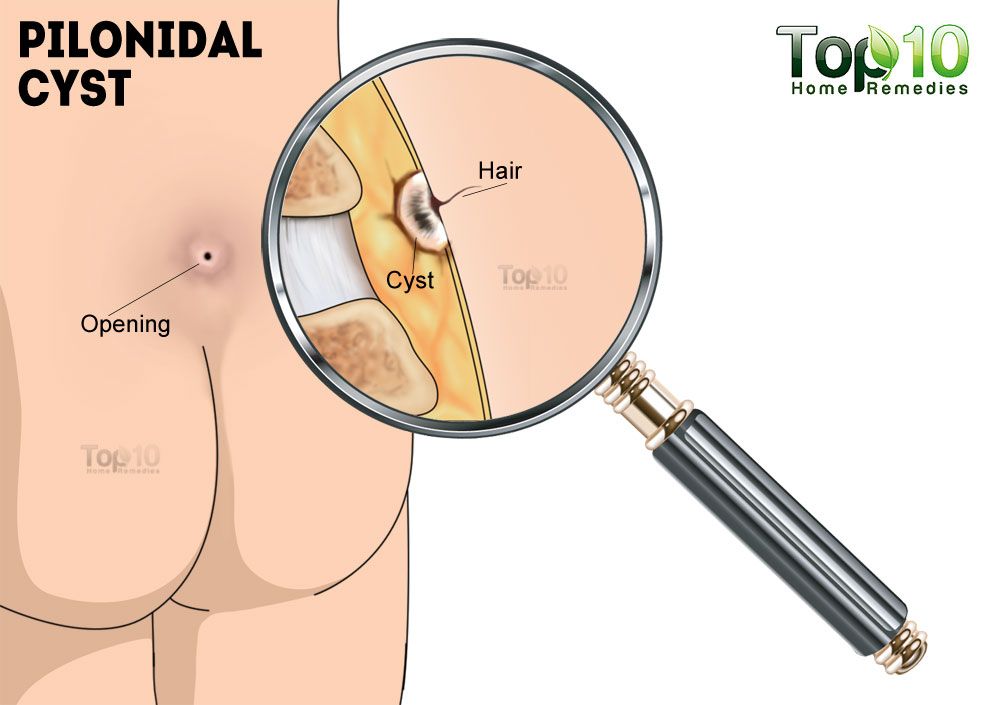 The dermoid cyst of the coccyx is a congenital pathology that is formed in utero when the elements of the germ layers are displaced under the skin, in the surface layers of the skin. A dermoid cyst differs from an epithelial coccygeal tract by a clear capsule; an epithelial pilonidal tract, unlike a dermoid cyst, has a point exit on the skin surface.
The dermoid cyst of the coccyx is a congenital pathology that is formed in utero when the elements of the germ layers are displaced under the skin, in the surface layers of the skin. A dermoid cyst differs from an epithelial coccygeal tract by a clear capsule; an epithelial pilonidal tract, unlike a dermoid cyst, has a point exit on the skin surface.
This type of cyst may not disturb the patient for a long time, manifesting itself only as discomfort and pain during long sitting. The development of the inflammatory process leads to a breakthrough of the cyst, the formation of a fistula, an increase in temperature, and severe pain when changing the position of the body.
Symptoms
With the development of the inflammatory process, symptoms of the disease appear:
- Body temperature rises.
- There is a feeling of discomfort in the coccyx area.
- Swelling and redness of the skin in the sacrococcygeal region.
- The patient feels severe pain while sitting.

- Purulent discharge appears from the openings of the coccygeal passage.
A tunnel-like swelling develops along the midline between the two buttocks, the openings of the coccygeal passage may not be observed due to swelling. With the development of a purulent process, pus begins to stand out from the holes. If suppuration of the cyst is not treated in a timely manner, the purulent process leads to the appearance of fistulas, a large phlegmon or an extensive abscess is formed.
Treatment
Inflammation of the epithelial coccygeal tract is treated in the multidisciplinary Yusupov hospital, in the department of coloproctology. Diagnosis of the disease begins with an examination and questioning of the patient. The proctologist listens to the patient’s complaints, determines the nature and duration of complaints, finds out whether there were injuries in the coccyx area, whether there are functional disorders in the pelvic organs. The doctor examines the condition of the skin of the buttocks, sacrococcygeal region, perineum, conducts a rectal examination for hemorrhoids, rectal prolapse, fistulas, anal fissures, tumors.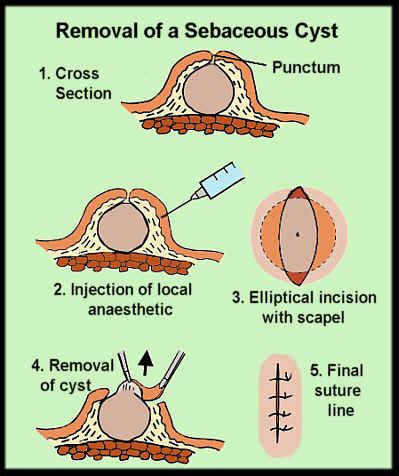 The proctologist of the Yusupov hospital can prescribe sigmoidoscopy, fistulography, ultrasound of the sacrococcygeal zone. Suppuration of the coccyx cyst is treated surgically.
The proctologist of the Yusupov hospital can prescribe sigmoidoscopy, fistulography, ultrasound of the sacrococcygeal zone. Suppuration of the coccyx cyst is treated surgically.
An indication for referring a patient to a hospital is acute inflammation of the epithelial coccygeal passage, planned pathology treatment. Depending on the classification, the severity of the disease, the tactics of surgical treatment is chosen. The operation to remove the cyst is carried out as a planned or emergency, depending on the patient’s condition.
There are several methods of surgical treatment of epithelial coccygeal tract:
- The method used for coccyx cyst complicated by abscess is a two-stage operation. The first stage is the opening of the abscess and cleaning the cavity. Within seven days the patient receives antibiotic therapy. Then the second stage is carried out with the removal of the affected tissues of the coccygeal passage.
- Complicated course of the disease – an abscess is opened, purulent contents are removed, to eliminate the risk of recurrence of the fistula, the edges are sutured to the bottom of the wound.
 The method has a drawback – an extended rehabilitation period.
The method has a drawback – an extended rehabilitation period. - Basque method. There is an excision under the skin of the coccyx cyst. The primary coccygeal passages are sutured, and drainage is placed in the secondary passages to drain the secretions.
- Karidakis method. During the operation, the inflamed area with a skin flap is removed. The wound surface recovers faster, the rehabilitation period is short.
- Sinusectomy. Removal of the cyst can be carried out in the absence of a purulent process. A substance (methylene blue) is injected into the opening of the epithelial coccygeal passage, which determines the number of openings of the coccygeal passage, the location. Then, with the help of an electrocoagulator and a probe, a resection is performed. No stitching is done.
- Laser cyst removal. The operation to remove the coccyx cyst is performed using a beam of radiation. The patient can go home on the day of the operation, if there are no complications.

- If multiple coccyx cysts complicated by fistulas are diagnosed, plasty is performed with a displaced flap. Not only the epithelial coccygeal passage with branches, but also the surrounding fatty tissue are excised. The cavities that formed after the removal of the cyst are closed with displaced skin flaps.
Classification according to ICD 10
Pilonidal cyst in the international classification of diseases ICD 10 is under the code:
- L00-L9Grade 9 12 – Diseases of the skin and subcutaneous tissue.
- L05- Pilonidal cyst.
- L05.0 – Pilonidal cyst with abscess.
- L05.9 – Pilonidal cyst without abscess.
- L00-L08 – Infections of the skin and subcutaneous tissue.
Clinic, diagnosis, treatment in Moscow
If an acute process develops in the sacrococcygeal region, you should immediately consult a doctor. In the Yusupov hospital, patients are provided with cozy hospital rooms. Patients will be able to receive consultations from multidisciplinary doctors, undergo examinations using modern diagnostic equipment, pass tests and receive effective treatment.

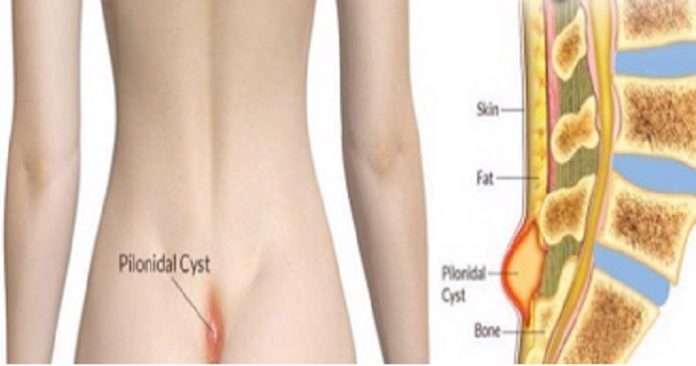 (n.d.).
(n.d.).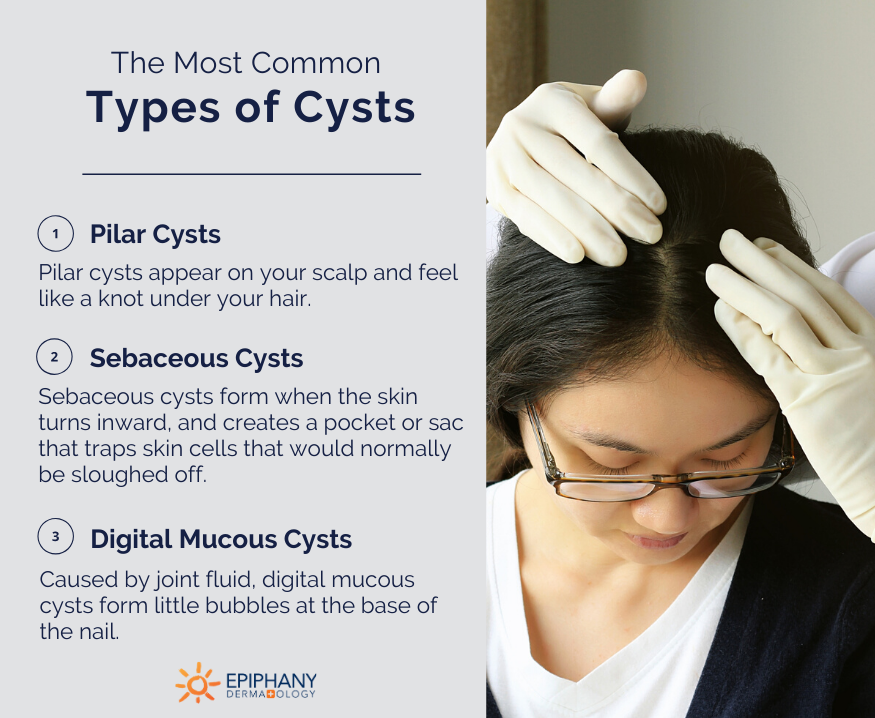 D.
D.
:max_bytes(150000):strip_icc()/tailbonepainfinal-01-5c05dc2546e0fb0001b90d83.png) When it appears on the upper lip, it’s referred to as a…
When it appears on the upper lip, it’s referred to as a…
 It helps with pus and discharge in pilonidal cyst to foster the healing process. However, warm compress is not responsible for preventing the development of pilonidal cyst. You can do it 2-3 times a day.
It helps with pus and discharge in pilonidal cyst to foster the healing process. However, warm compress is not responsible for preventing the development of pilonidal cyst. You can do it 2-3 times a day. 


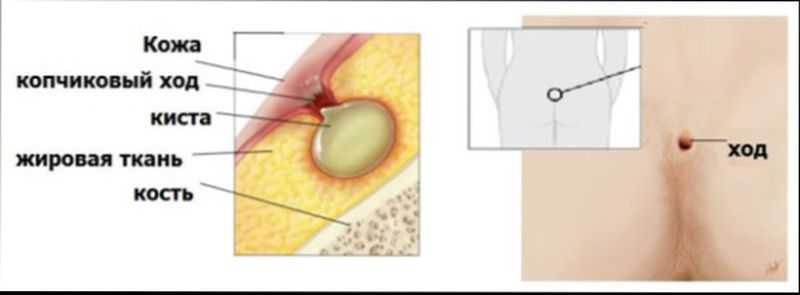
 The flap becomes a scaffold that holds the edges of the wound, making it immobile. Fascia is an incredibly durable material for the sheath of the muscle and the surgical flap. The flap becomes a barrier to traumatic wound tension and protects it from stress, which often destroys the treatment. The technique is also distinguished by a quick recovery in relation to a small access incision, rare complications, and a successful cosmetic effect (the scar is hidden in the intergluteal crease and is barely noticeable).
The flap becomes a scaffold that holds the edges of the wound, making it immobile. Fascia is an incredibly durable material for the sheath of the muscle and the surgical flap. The flap becomes a barrier to traumatic wound tension and protects it from stress, which often destroys the treatment. The technique is also distinguished by a quick recovery in relation to a small access incision, rare complications, and a successful cosmetic effect (the scar is hidden in the intergluteal crease and is barely noticeable). A large cyst is excised through an incision on the side of the fold. The technique remains debatable and finds opponents today.
A large cyst is excised through an incision on the side of the fold. The technique remains debatable and finds opponents today.
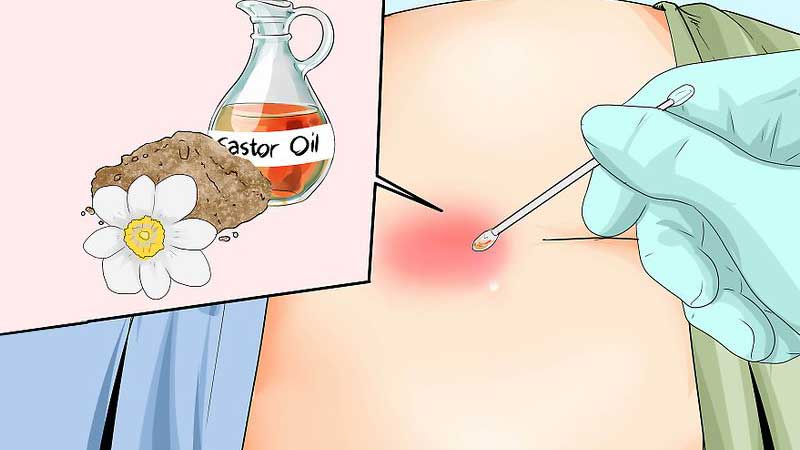
 The method has a drawback – an extended rehabilitation period.
The method has a drawback – an extended rehabilitation period.